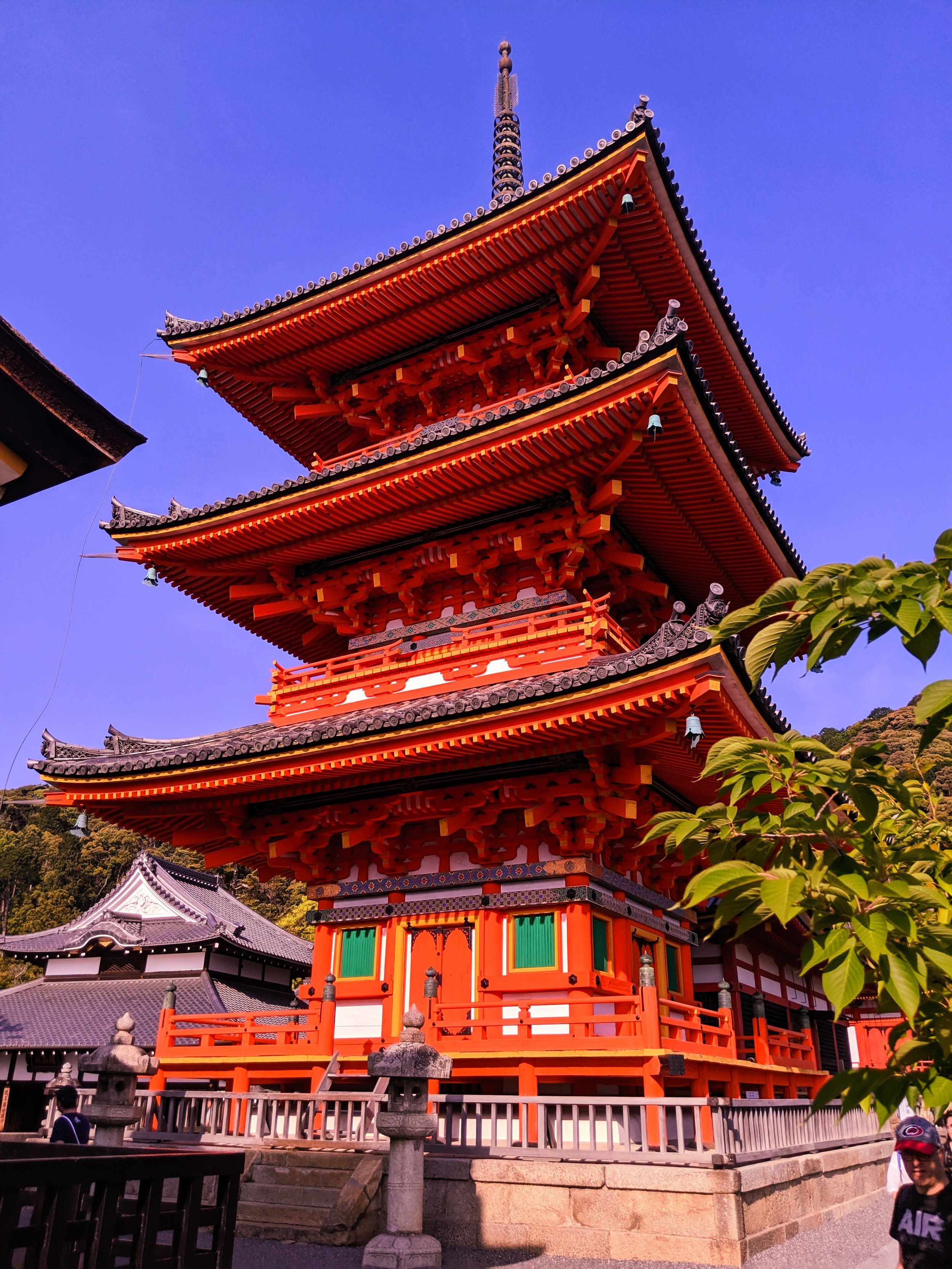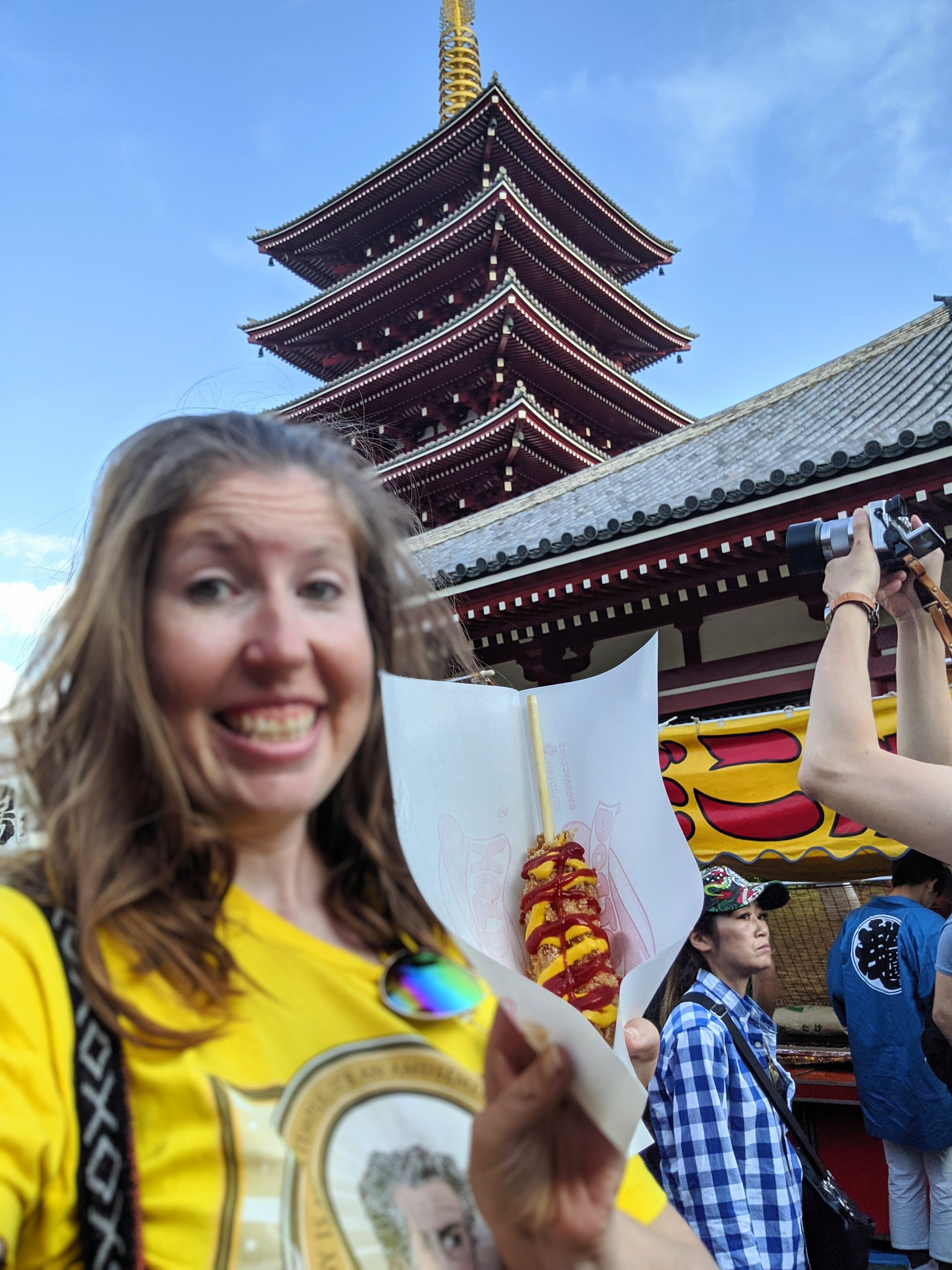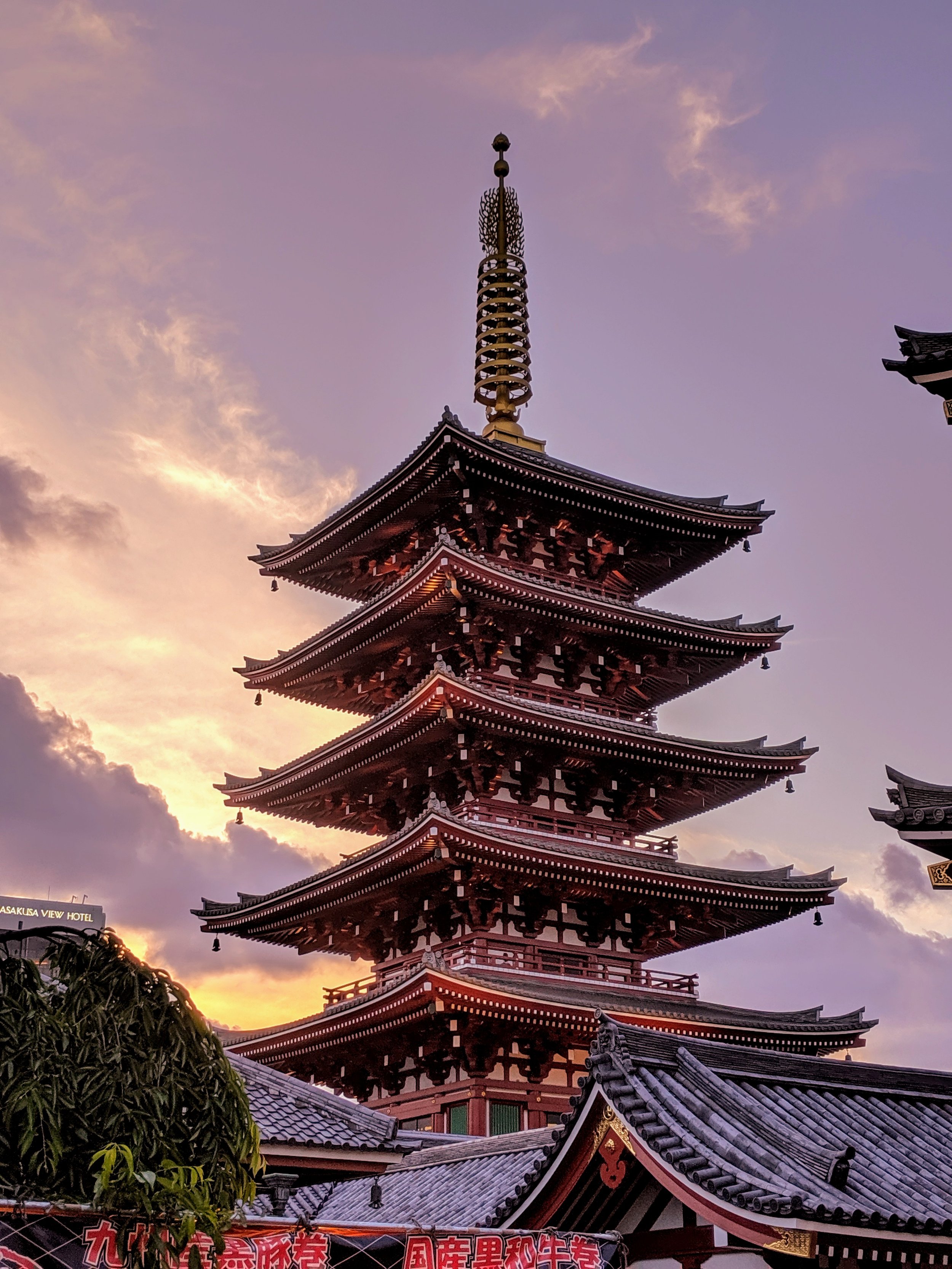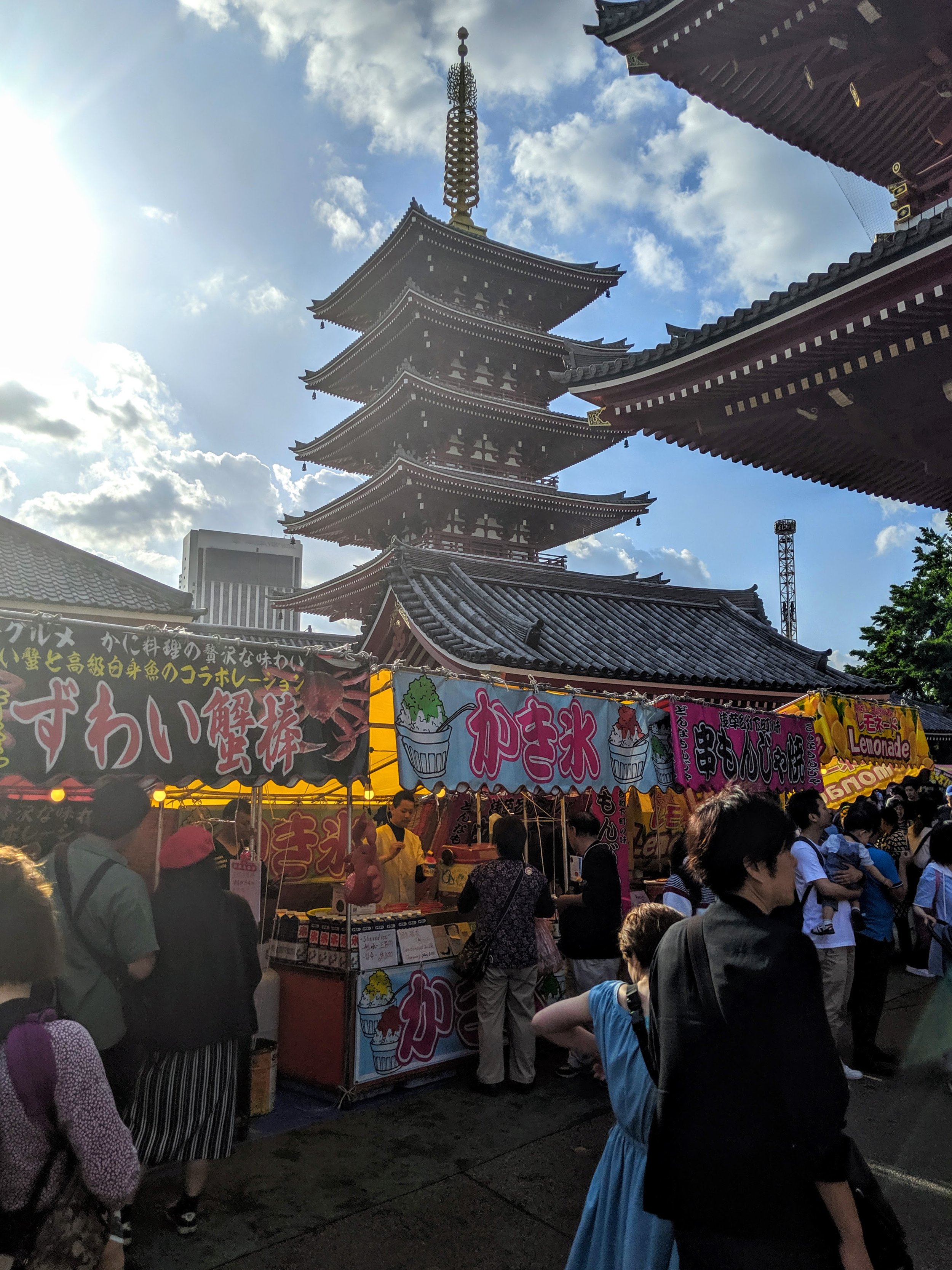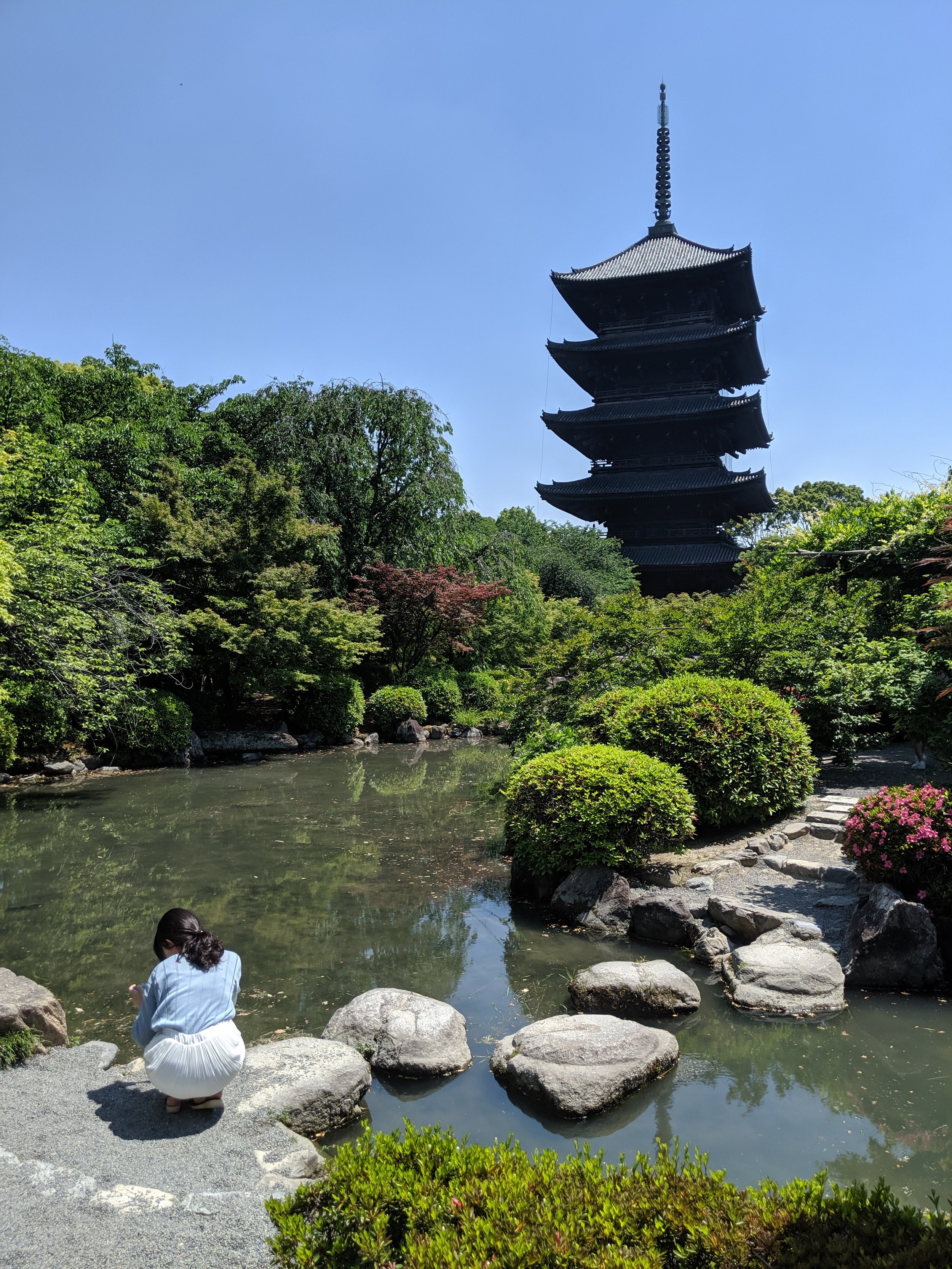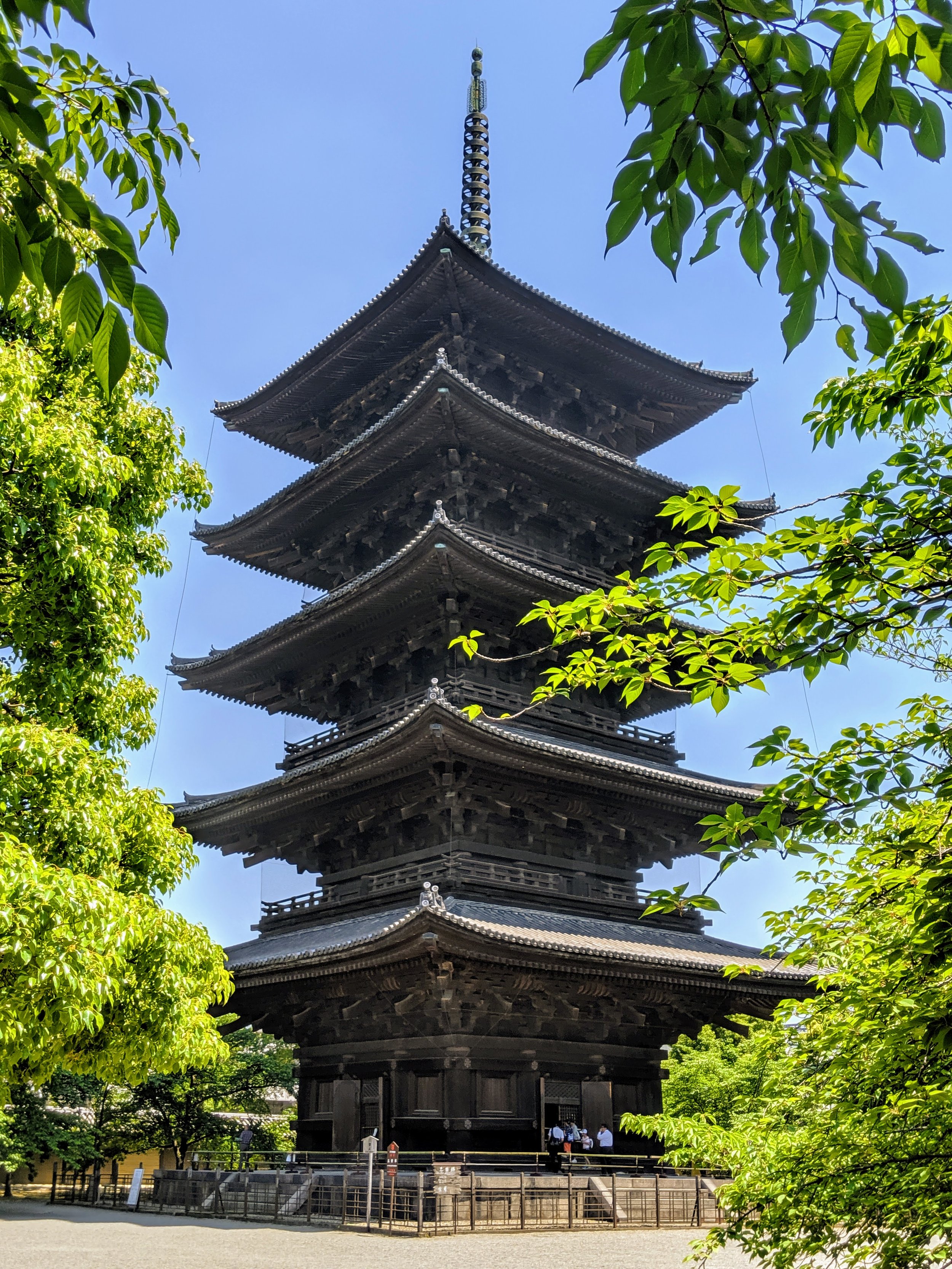Six of Japan's Best Holy Pagodas
Disclosure: Please note that some of the links below may be affiliate links, and at no additional cost to you, I earn a commission if you make a purchase. I recommend only products and companies I use and the income goes to keeping the site community supported.
Six Pagodas You Don't Want to Miss in Japan
There are certain images that are iconically Japanese: vermilion torii (those orange-red gates, you know the ones). Sushi. Girls in kimonos or yukata. Exaggerated manga images. Japanese calligraphy. And of course, Pagodas.
Five-tiered, straight-sided Pagodas to be exact.
Nearly every major city has at least one temple with one, and they are striking. Pagodas (to in Japanese) capture our imagination and our camera lens. They mark Buddhist sites, anchoring temple complexes and connecting the sky with the serene gardens and architecture below. Many include statues to the Buddha inside, or even relics.
In many cases, the five tiers connect to the five elements found in Japanese Buddhist cosmology: earth, water, fire, wind, and aether (air).
If Christianity has her bell towers, and Islam has her minarets, then Japanese Buddhism has her Pagodas.
While there are many famous Pagodas worthy of the visitor's attention across all of Japan, this list provides my favorite from the three cities most likely to be frequented by first-time tourists - who may be in the most need of guidance. In addition to these three cities (Tokyo, Kyoto, and Osaka), I've also included two stunning options from easy day trips (Nikko and Nara) that are impressive enough to warrant a visit.
And there's a bombastic little runner-up from Kyoto at the end for those who want something a little splashier to add to their photo album!
So without further ado, the five best five-tiered Pagodas you won't want to miss in Japan!
TOKYO - The Five-Storied Pagoda of the Senso-ji Complex
The first time I went to Japan, I landed in Tokyo and made a beeline for the Senso-ji Temple, the city's premier Buddhist spot. When I arrived and saw the massive deep red temple and its 55m tall Pagoda, I wept. It is stunning, breathtaking, and other superlatives that don't do it justice. If you go to Tokyo and don't go to Senso-ji, you f'ed up, it's that simple.
But let's back up. You'll get off the metro at Asakusa and begin the walk through the Kaminari-mon gate, which is itself impressive. Then you'll hit my #1 favorite, favorite(!!) place to shop in Japan for affordable Japanese souvenirs: the Nakamise-dori. What do you want - shoes, those cute socks with the toes, macha everything, scarves, trinkets, art, tea, pottery, Edo-period swords, Shinto charms, or more? It's all there. And the area is well organized, quaintly decorated with lanterns, and diverse. My favorite one-stop souvenir zone, period.
You'll somehow make your way through (you'll have some purchase in your hand, no doubt) and will reach the central courtyard. To your left will be the Pagoda - and it's the second tallest in all of Japan, so you won't miss it. The original was built in 1648CE by Tokugawa's grandson Iemitsu, but the current building was reconstructed in 1973 and masterfully renovated in 2017. You can't look in, but you can look up.
In front of you will be the Senso-ji itself, a vast Buddhist honden with a statue of the Buddhist goddess of Mercy, Kannon, hidden away in a spot where she's been worshipped since the 7th century. But the massive hall is great to walk around to see the other Buddha statues, as well as the shops selling Buddhist and Shinto charms (omamori).
To your right in the courtyard is the Asakusa Shinto shrine, itself an important religious site in Tokyo. The presence of the shrine highlights how well Buddhism and Shinto intertwine throughout the country. The entire courtyard area is planted with lovely gardens featuring statues of Buddha, Shinto kami, and notable figures. While Senso-ji is always packed and noisy, these little gardens offer at least a few tucked away spots for quieter meditation.
Everything in the complex is free of charge to visit, giving you more money to blow on Nakamise-dori.
NIKKO - The Tokugawa Pagoda at Tosho-gu Temple Complex
The Tosho-gu complex is dedicated to the life and achievements of Tokugawa Ieyasu, and was built primarily during the rule of his son in 1617 (though some parts were added by his grandson). During the Edo period, a pilgrimage connected Nikko with Edo (now Tokyo), and this is what is re-enacted during the Togyosai festival in May. Hence, the flags in some of my pictures. The entire setting is deep in the woods, making it a beautiful choice if you’re visiting in the fall when the leaves are colorful.
Tosho-gu Pagoda in Nikko, Japan
You’ll approach the Pagoda and temple complex via a large stone torii. To be honest, I was walking with a friend, talking, and when we turned the corner and saw the Pagoda, I stopped mid-sentence and exclaimed, “woah, ok!” It’s beautifully decorated and massive.
The Pagoda was originally built by a daimyo (samurai just under the shogun during the Edo period) in the 1600s, but burned down; this iteration is from 1818. The levels are more ornately decorated than other Pagodas.
From here, you’ll walk up a set of stairs to the Tosho-gu complex, which is itself worth a few hours visit. You can read more about visiting the entire complex beyond the Pagoda in my handy guide. Walking in the footsteps of Shinto kamii Tokugawa Ieyasu is pretty excellent.
KYOTO - The Toji Pagoda and Complex
Set in a tiny, tranquil garden, this Kyoto Pagoda is dark and imposing, much like the example in Nara. The temple complex is a premier site for Shingon Esoteric Buddhism, and includes several National Treasure statues throughout its various halls and museum (ticket required). The temple was founded in 796CE, so it was one of the only three Buddhist temples in Kyoto when the city was the national capital.
The 16th century (Edo period, also built by Tokugawa Iemitsu) Pagoda itself sits at the Northwest of the site (you can't miss it), and is one you can look into. And you really should, because it features four Buddhas, each looking out at a cardinal direction. You aren't allowed to go in or climb, only peek through the open doors, but do stick your head in. The walls inside are covered with outstanding paintings of studying monks. No photos inside is a bummer.
This tower is also the tallest wooden tower in all of Japan - which may not sound like a big deal, but fires throughout Japanese history mean that it’s really impressive something so large and wooden survived so long!
The late Edo period/early Kamakura period Miei Hall (mieido) and Golden Hall (kondo) are also filled with National Treasure statues of the Buddha, as well Wisdom Kings and devas. Resplendent in gold and with crystal eyes, many of these statues are worth sitting in front of and reflecting on. Their faces show strong emotions.
While I was there in May 2019, most of the statues were away at the Tokyo National Museum in a special exhibition on Esoteric Buddhism (lucky I caught them there the week previous!)
The complex also includes some small halls featuring modern Buddhist art and a small but interesting museum with a few impressive mandala paintings and Buddhas. The Pagoda anchors the complex nicely.
NARA - The Pagoda at Kofuku-ji Temple Complex
Nara is a very easy day-trip from either Kyoto or Osaka, though I took two days to slow down and commune with the deer in the park. But its ease of access from the bigger cities makes it a popular side journey.
Nara itself has its truly magical parks filled with sacred, bowing deer. It also has an outstanding big-Buddha temple at Todai-ji in the park. And Buddhism lovers should check out the incomparable Nara Buddhist Sculpture Hall & Ritual Bronzes Gallery, one of the best of its kind in the world.
But the Pagoda you'll want sits on a hill in the Kofuku-ji Complex and can be seen on the skyline from much of the area around. The temple complex is the headquarters of Japan’s Hosso school of Buddhism (a Chinese form of Buddhism with a strong psychology element) - this makes it a little different than the other options on this list.
Kofuku-ji was founded in the late 7th century and constructed in the early 8th century. It was the tutellary temple (school associated with a powerful family) of the Fujiwara clan, which dominated during the Heian period, meaning that the complex was well-preserved and features a number of architecturally impressive buildings for a city as small as Nara.
The Five-Storied Pagoda, rebuilt after a fire in the early 15th century, is on the eastern side of the complex (closer to the deer park). There’s also a smaller, three-storied one on the western side. It’s also worth checking out the East Golden Hall (to-kondo) nearby the Five-Storied Pagoda, built during the same decade. Elsewhere, check out the newly rebuilt (2018!) Central Golden Hall (chu-kondo), which is often used for lectures about Hosso philosophy.
Unfortunately, tickets are required for the two golden halls, as well as the National Treasury Museum, and photos are not allowed. But it’s free to wander the ground and look at the Pagodas. I also really enjoyed the two cute octagonal halls. The one in the south end of the complex is adored by tourists and dates from the 18th century, but take the time and wander back to the north of the complex to see the other - it’s from the 13th century.
OSAKA - The Shintenno-ji Pagoda and Complex
Buddhism was first spread to Japan in the mid-6th century by Prince Shotoku-taishi, and it is said that Osaka's Shintenno-ji was the first temple he founded in the country. That original temple is now gone, but several temples and structures from later eras can be visited.
The oldest part of the complex is the massive - massive y'all - stone torii that you'll see as you approach. It dates from the mid-13th century, and nicely frames the complex. You walk through, avoid the grade school on your left, and spend your time wandering around small shrines, both Buddhist and Shinto. There's plenty of seating, neat flags to see, and ponds with piles of turtles. You can also pay to walk through a lovely garden, a quiet spot in an otherwise industrial, working-class neighborhood.
But the good stuff is in the middle (requiring a ticket) - the Pagoda and the honden hall. The Pagoda is open and, uniquely, available to climb. The bottom level features the four Wisdom Kings, and higher levels are flooded with tiny Buddha states. Make your way to the top to see a relic of the Buddha enshrined.
You'll also want to stop in the main honden, which has a massive golden Buddha, a smaller one (still pretty big!) and a lovely Kannon (Buddhist mercy goddess). And while these are quite worthy of attention, I was really enthralled by the well-preserved and detailed paintings of historical and mythical scenes which line all the walls of the hall. They are dimly lit, coaxing you to come close and stroll the perimeter to appreciate them up close.
RUNNER UP: KYOTO - The Orange Pagoda at Kiyomizu-dera
Kiyomizu-dera is a tranquil Buddhist temple built overlooking a wooded garden that spreads up the hillside… or rather, it would be tranquil if it wasn't swarmed with tourists and Kyoto's locals alike.
The main honden (ticket required, the rest free), dating from the 17th century is made of dark wood, making it blend into the surroundings serenely. Its balconies offer excellent views. Below, a waterfall with sacred water features a platform with three cups where you catch a blessed drink.
Elsewhere, there are many side temples, including a love temple where you can learn if you are destined to find true love. These sections of the complex are built in harmony with the surrounding landscape.
The entrance gates and Pagoda are not. Instead, they feature the audacious vermilion so common in Shinto art, and hit your view like a powerhouse when you approach. Orange, y'all, like they aren't even trying to match. The Pagoda in particular is massive, showy, and bright. It also features on the ticket and in several pop culture images of the city. The only reason it didn't win out for Kyoto is that you can't look in it at all.
CHLOE'S TIP: Make sure you approach the entire complex from below via the Chawan-zaka (teapot lane), a series of quaint shops and cafes in traditional buildings. Everyone raves about the Gion area in Kyoto, but I enjoy Chawan-zaka more.
And there you have it! Six stellar Pagodas to find on your journeys… I dare you to try and catch them all on your next trip to Japan!
